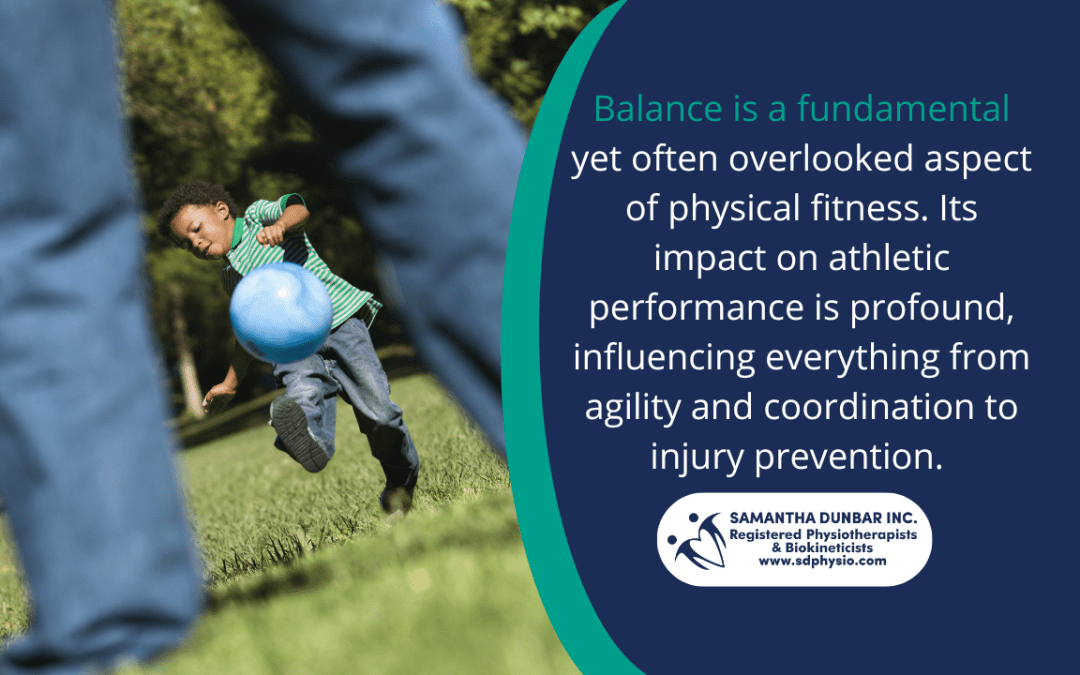Balance is a fundamental yet often overlooked aspect of physical fitness. Its impact on athletic performance is profound, influencing everything from agility and coordination to injury prevention. Below, we explore how balance plays a critical role in sports and why training for it can significantly enhance athletic performance.
What is Balance?
Balance is the ability to maintain control of your body’s position, whether stationary or moving. It involves a complex interaction between the vestibular system (inner ear), visual input, and proprioception (the sense of body position). These systems work together to help you maintain stability during various activities, from standing on one leg to executing a complex athletic task.
Why Balance is Crucial in Sports
In virtually every sport, balance is essential for optimal performance. It allows athletes to execute movements with precision and efficiency, reduces the risk of injury, and can even provide a competitive edge.
Enhanced Agility and Coordination
Balance is closely tied to agility, which is the ability to change direction quickly and efficiently. In sports like basketball, tennis, and soccer, where quick pivots and changes in direction are frequent, good balance allows for smoother, more controlled movements. Improved coordination between muscles also means more efficient execution of these movements.
Injury Prevention
Scientific research supports the role of balance in injury prevention. A study published in the British Journal of Sports Medicine found that balance training significantly reduces the risk of ankle sprains in athletes, particularly in sports that involve jumping and landing. By improving balance, athletes can better control their body movements and avoid awkward positions that could lead to injuries like sprains, strains, or falls.
Strength and Stability
Balance training engages core muscles and stabilizers, leading to increased overall strength and stability. Research in the Journal of Strength and Conditioning Research has shown that incorporating balance exercises into a training regimen not only improves balance but also enhances core strength, which is vital for maintaining posture and body control during athletic activities.
The Science Behind Balance
The role of balance in sports can be understood through the concept of neuromuscular control, which is the ability of the nervous system to coordinate muscle activity for stability and movement. When you perform a balance exercise, your brain and muscles work together to make constant adjustments. This neuromuscular coordination is crucial for maintaining stability during dynamic activities.
For instance, during a soccer match, when an athlete prepares to kick the ball, their brain sends signals to the muscles to adjust the body’s position in response to the ball’s movement, the opponent’s position, and the athlete’s own motion. This continuous feedback loop between the brain and muscles ensures that the athlete remains stable and can execute the kick with precision.
The Benefits of Training Balance
Training for balance offers a wide range of benefits for athletes across all sports:
Improved Athletic Performance
Whether you’re a sprinter, a cyclist, or a tennis player, better balance leads to more controlled and powerful movements. This translates to faster sprints, more accurate shots, and better overall performance.
Better Posture and Body Alignment
Balance training often involves exercises that require maintaining proper posture. This helps in aligning the body correctly, reducing unnecessary strain on joints, and enhancing overall movement efficiency.
Injury Prevention
As mentioned earlier, improving balance reduces the likelihood of injuries. By training your body to maintain stability in various situations, you’re less likely to experience falls, sprains, or strains.
How to Train for Balance
Incorporating balance exercises into your routine is relatively simple. Start with basic exercises like standing on one leg or using a balance board. As you progress, you can add more dynamic movements, such as lateral hops or single-leg squats, to challenge your balance further.
Incorporating these exercises into your regular training can lead to significant improvements in your athletic performance. Balance is a foundational skill that underpins many aspects of physical fitness. By dedicating time to balance training, athletes can enhance their performance, reduce the risk of injury, and gain a competitive edge.













